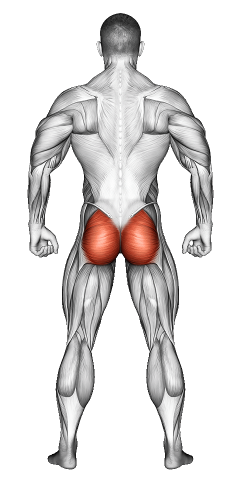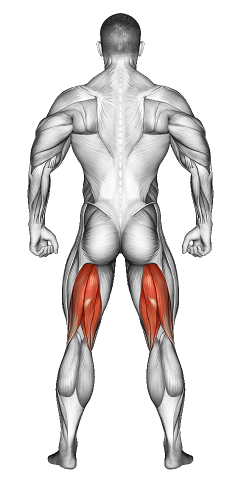Dumbbell Hip Thrust: Video Tutorial & Exercise Guide

Written By: Claude Michael
Updated: Oct 13, 2024
| Workout | Dumbbell Hip Thrust |
| Primary Muscle Group | Glutes |
| Secondary Muscle Group | Hamstrings |
| Equipment Required | Dumbbell |
| Force Type | Push |
| Mechanics | Isolation |
| Exercise Type | Strength |
| Difficulty | Intermediate |
Dumbbell Hip Thrust: Video Tutorial & Exercise Guide
- 1.Dumbbell Hip Thrust: Muscle Groups
- -1.1Primary Muscle Group
- -1.2Secondary Muscle Group
- 2.Dumbbell Hip Thrust: Step-by-Step Guide
- 3.Dumbbell Hip Thrust: Overview
- 4.Dumbbell Hip Thrust: Benefits
- 5.Dumbbell Hip Thrust: Pro Tips & Advanced Techniques
- 6.Dumbbell Hip Thrust: Progression Plan
- 7.Dumbbell Hip Thrust: Frequently Asked Questions (FAQs)
Secondary Muscles Group
Dumbbell Hip Thrust: Step-by-Step Guide
- Step 1: Sit on the floor with your upper back against a bench or something sturdy enough to support you. Put your feet flat on the floor, shoulder-width apart from each other, and hold a dumbbell on your hips.
- Step 2: Engage your core, initiating hip elevation through the heels into extension. Squeeze your glutes hard at the top.
- Step 3: From shoulders to knees, at the top your body is one straight line from head to toe with dumbbells resting on the hips for resistance.
- Step 4: Remain at the top for a few seconds and focus on the squeeze of your glutes.
- Step 5: Lower your hips back down in a controlled manner until they're just above the floor, keeping tension on your glutes throughout.
Dumbbell Hip Thrusts: Overview
The dumbbell hip thrust is one of the most effective glute and hamstring exercises. Adding the dumbbell for resistance in this movement encourages the Glutes to grow and gain strength. This includes an up-and-down motion of thrust, along with load that wisely activates the Glutes through a full range of motion, making it one of the top choices for lower body development. This is a great exercise to include into any workout aimed at improving posterior chain strength and aesthetics.
Dumbbell Hip Thrusts: Benefits
This is just an intense exercise for the development of strong glutes, hamstrings, and hip mobility. Dumbbell hip thrusts nurture the gluteus more than one would experience from a traditional squat or deadlift. In essence, it is great for people who want to shape their lower body muscles. They are also great for improving athletic performance by translating to more power in movements such as sprinting or jumping.
Dumbbell Hip Thrusts: Pro Tips & Advanced Techniques
Form focus: Make sure that your upper back remains on the bench and that your knees track over your toes throughout the ROM.
Time under tension: If one is looking to make this harder, they may want to consider slowing down the lowering phase of the thrust in order to spend more time under tension.
Heavier resistance: Once you start building up strength, try going for heavier dumbbells or even put a resistance band around the knees to really pop those glutes.
Dumbbell Hip Thrusts: Progression Plan
Beginner
Intermediate
Advanced
Dumbbell Hip Thrust: Frequently Asked Questions (FAQs)
What muscles do dumbbell hip thrusts target?
+They target primarily the glutes, with secondary activation of the hamstrings and hip adductors.
How do dumbbell hip thrusts differ from other hip thrusts?
+The dumbbell variation offers a versatile alternative for home workouts or in the absence of a barbell. It provides great engagement to the glutes without having to deal with heavy equipment.
What are common mistakes to avoid?
+Avoid over-arching your lower back or letting the knees in. Keep your core tight and focus on the glute squeeze to maintain proper form.
How often should I include this exercise into my routine?
+Do dumbbell hip thrusts once or twice a week for the best results in your lower body workout.
What weight should I start with?
+Go light to make sure that the form is correct, then gradually increase the weight as strength improves.
Share
Don’t Wish for It, Work for It – Join the FlexXP Newsletter Today!
Thank you for signing up for the FlexXP Newsletter!
This site is protected and the Google Privacy Policy and Terms of Service apply.

